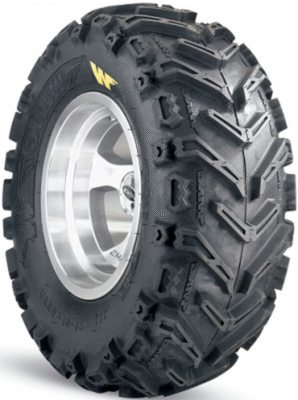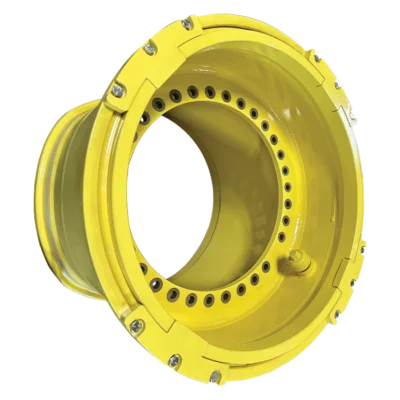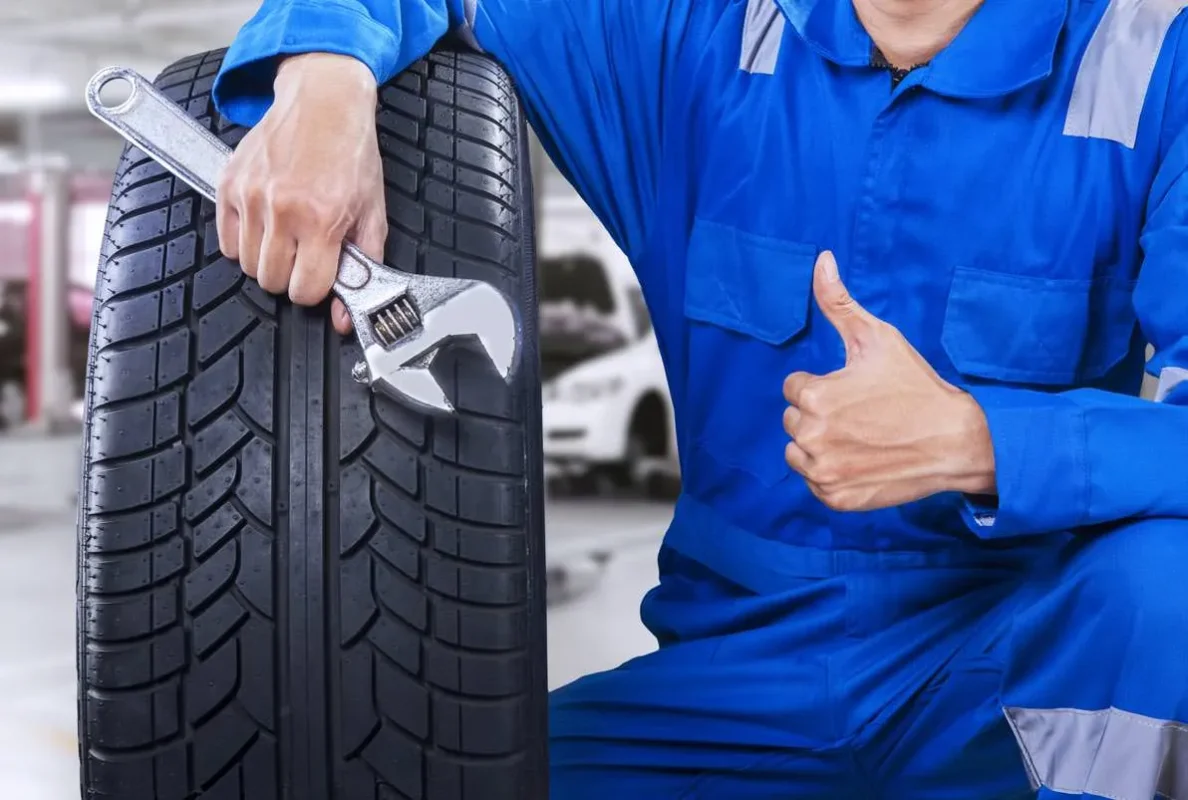Seasonal Tire Maintenance: Maximizing Performance Across All Road Conditions
Seasonal Tire Maintenance: Maximizing Performance Across All Road Conditions
The tire industry reached a staggering $142.7 billion valuation in 2024, yet countless drivers neglect the seasonal maintenance that could extend their tire life by up to 70,000 miles. At TireBulk.com, we understand that proper seasonal tire maintenance isn’t just about safety; it’s about maximizing your investment while ensuring peak performance year-round. Our experience with thousands of customers across diverse climates has revealed the critical importance of adapting tire care strategies to seasonal demands.
Weather conditions drastically affect tire performance, with temperature fluctuations alone causing pressure variations of 1-2 PSI for every 10-degree change. This comprehensive guide transforms how you approach tire maintenance throughout the seasons, ensuring optimal performance whether you’re navigating summer heat waves or winter ice storms.
Buy Quality Tires for All-Season Performance
Strategic tire selection forms the foundation of effective seasonal tire maintenance. Modern tire technology offers solutions for every seasonal challenge, but understanding which tires perform best in specific conditions can save money and lives. Radial tires captured a noteworthy share in 2024, propelled by their superior performance and durability, featuring innovative construction that offers improved fuel efficiency, enhanced handling, and longer tread life than traditional bias-ply tires.
Our commercial tire selection includes options specifically engineered for seasonal versatility. The Continental HSR2 excels in wet conditions, while the Goodyear G182 RSD provides exceptional winter traction for commercial applications.
All-Weather Performance Leaders: All-weather tires have become a popular choice for drivers worldwide due to their versatility, handling a wide range of weather conditions, making them suitable for most regions except those with extreme conditions. These tires eliminate the need for seasonal changeovers while maintaining acceptable performance across temperature ranges.
What is Proper Seasonal Tire Maintenance?
Seasonal tire maintenance encompasses systematic care protocols that adapt to changing weather conditions and driving demands. Unlike basic tire care, seasonal maintenance considers temperature effects, precipitation patterns, and road surface changes that occur throughout the year.
Professional maintenance protocols include pressure adjustments for temperature changes, tread depth monitoring based on seasonal requirements, rotation schedules that account for weather-related wear patterns, and storage procedures for seasonal tire sets. Our experience shows that vehicles following proper seasonal maintenance protocols achieve 25-30% longer tire life compared to those receiving only basic care.
The science behind seasonal maintenance lies in understanding how rubber compounds respond to temperature variations. Summer heat softens rubber compounds, accelerating wear on pavement, while winter cold hardens compounds, reducing traction on icy surfaces. Proper maintenance bridges these challenges through strategic adjustments and preventive care.
Spring Tire Care: Preparing for Warmer Months
Spring maintenance begins with a comprehensive inspection after winter’s harsh conditions. Cold weather contracts rubber and steel components, potentially creating stress points that become apparent as temperatures rise. Our spring maintenance checklist addresses damage from salt exposure, freeze-thaw cycles, and harsh winter driving conditions.
Pressure Recalibration: Spring warming requires pressure adjustments as temperatures stabilize. Check pressure when tires are cold, preferably in the morning before driving. Winter pressures set during freezing temperatures become overinflated as weather warms, leading to center tread wear and reduced contact patch.
Visual Inspection Protocol: Examine tire sidewalls for cracking, bulging, or other winter damage. Salt corrosion affects wheel wells and valve stems, requiring thorough cleaning and inspection. Look for uneven wear patterns that might indicate alignment issues from winter pothole encounters.

Best Summer Tire Maintenance Practices
Summer presents unique challenges for seasonal tire maintenance, with high temperatures and increased driving distances testing tire durability. Heat buildup from extended highway driving can push tire temperatures beyond safe operating ranges, while hot pavement accelerates tread wear rates.
Our specialty tire collection includes options designed for extreme heat conditions. The Nitto NT01 provides exceptional heat resistance for performance applications, while the Toyo Proxes RA1 offers consistent performance in high-temperature conditions.
Temperature Management: Monitor tire temperatures during extended drives, especially when fully loaded or towing. Surface temperatures can exceed 150°F on hot asphalt, pushing internal tire temperatures beyond optimal ranges. Plan rest stops for cooling when surface temperatures reach extreme levels.
Tread Depth Monitoring: Summer driving typically involves longer distances and higher speeds, accelerating tread wear. Monthly tread depth checks ensure adequate remaining depth for wet weather performance. The penny test provides quick assessment, but digital gauges offer more accurate measurements.
Summer Tire Pressure Guidelines
| Temperature Range | Pressure Adjustment | Performance Impact |
|---|---|---|
| 70-80°F | Baseline pressure | Optimal contact patch |
| 80-90°F | +2 PSI | Prevent underinflation |
| 90-100°F | +3-4 PSI | Manage heat buildup |
| 100°F+ | +5 PSI | Maximum heat protection |
How to Maintain Tires During Winter Months
Winter seasonal tire maintenance requires the most intensive care protocols due to extreme temperature variations and challenging road conditions. The tread depth on a set of new winter tires is usually around 10/32 to 11/32 inches, and when the tread is new, you get the most from those tires. However, performance deteriorates rapidly as tread depth decreases below critical thresholds.
Critical Tread Depth Requirements: It is not recommended to drive on winter tires if their tread depth is less than 5/32″ to 6/32″, as a significant decline in performance on wet, and especially snowy or icy surfaces occurs. This represents nearly double the legal minimum for all-season tires, highlighting winter’s demanding requirements.
Our winter-ready options provide superior cold-weather performance. The Carlisle Snow Hog offers aggressive tread patterns designed for snow and ice traction, while maintaining road manners for mixed winter driving.
Temperature Compensation: Winter pressure adjustments become critical as temperatures drop below freezing. For every 10-degree temperature decrease, tire pressure drops approximately 1-2 PSI. Under-inflated tires in winter conditions create dangerous handling characteristics and accelerated wear patterns.
Storage Considerations: Proper winter tire storage preserves rubber compounds and prevents damage. Store tires in cool, dry locations away from direct sunlight and ozone sources. Stack tires horizontally or hang individually to prevent flat-spotting and deformation.
When to Replace Tires Based on Seasonal Wear
Understanding replacement timing for seasonal tire maintenance requires more nuanced analysis than simple tread depth measurements. Different seasons place varying demands on tire performance, making universal replacement criteria inadequate for optimal safety and performance.
Consumer Reports’ treadwear testing has shown that family-car tires can readily last 70,000 miles or more, based on a recent evaluation of eight all-season and 18 performance all-season models. However, achieving maximum mileage requires proper seasonal maintenance throughout the tire’s service life.
Summer Replacement Criteria: Hot weather accelerates rubber compound breakdown, making age a critical factor beyond tread depth. Tires older than six years require enhanced inspection regardless of remaining tread depth. Heat cycling from repeated warming and cooling creates micro-fractures that compromise structural integrity.
Winter Replacement Thresholds: According to tire manufacturers, and even the law in most provinces, your tires should be replaced when the tread depth reaches 4/32″ in the winter, as tires at those levels are considered bald and a safety hazard. However, performance-conscious drivers should consider replacement at 6/32″ for optimal winter traction.
Why Proper Tire Storage Matters for Seasonal Performance
Seasonal tire storage significantly impacts tire longevity and performance characteristics. Improper storage can reduce tire life by 20-30% through compound degradation, structural damage, and contamination. Our storage protocols maximize tire investment while ensuring peak performance when tires return to service.
Environmental Control: Store tires in temperature-controlled environments when possible. Extreme temperature fluctuations cause expansion and contraction cycles that stress tire components. Ideal storage temperatures range from 50-70°F with relative humidity below 65%.
Position and Support: Proper positioning prevents flat-spotting and maintains tire shape. Store unmounted tires vertically in tire racks, rotating positions monthly. Mounted tires should be stored horizontally, stacked no more than four high, or hung individually from the wheel center.
Our wheel collection includes storage-friendly options that simplify seasonal changeovers. The 32-inch 3-piece forestry wheels offer durability for harsh seasonal conditions, while John Deere wheels provide OEM-quality performance for agricultural applications.

How Seasonal Changes Affect Different Tire Types
Different tire categories respond uniquely to seasonal changes, requiring tailored maintenance approaches. Understanding these variations enables more effective seasonal tire maintenance strategies that maximize performance and longevity across diverse applications.
Commercial Tire Considerations: Fleet operations face unique seasonal challenges with varying load requirements and extended service schedules. Our commercial tire selection addresses these demands through enhanced durability and performance consistency. The Roadmaster RM185 provides excellent all-season performance for mixed commercial applications.
Agricultural Seasonal Demands: Farm operations experience extreme seasonal variations in load, terrain, and usage patterns. Our agriculture tire collection includes specialized options for seasonal applications. The BKT Jumbo Trax HD offers exceptional performance in muddy spring conditions, while the Firestone Champion Guide Grip provides excellent traction for harvest operations.
Specialty Application Variables: Unique applications require specialized seasonal maintenance approaches. Our specialty tire options address diverse seasonal requirements. The Galaxy Hulk L-5 handles extreme seasonal conditions in construction applications, while BKT W207 ATV tires provide year-round recreational performance.
Advanced Seasonal Tire Care Techniques
Professional-grade seasonal tire maintenance incorporates advanced techniques that extend tire life and optimize performance. These methods go beyond basic care to address seasonal challenges through systematic monitoring and preventive intervention.
Compound Conditioning: Seasonal temperature changes affect rubber compound characteristics. UV protectants and rubber conditioners help maintain compound flexibility through temperature extremes. Apply protective treatments during storage periods and before seasonal installation.
Alignment Optimization: Seasonal road conditions affect suspension components and alignment settings. Spring alignment checks address winter damage from potholes and harsh conditions. Fall alignments prepare vehicles for winter driving demands and ensure even tire wear through challenging months.
Pressure Monitoring Systems: Advanced tire pressure monitoring provides real-time data for optimal seasonal maintenance. Systems track pressure trends, temperature effects, and slow leaks that might otherwise go unnoticed. Professional-grade monitors offer historical data analysis for predictive maintenance scheduling.
Trailer and Lawn Equipment Seasonal Care
Specialized equipment requires adapted seasonal tire maintenance protocols due to unique usage patterns and storage requirements. Trailer tires face extended storage periods followed by intensive use, while lawn equipment operates seasonally with demanding conditions.
Our trailer tire selection addresses these unique requirements. The Atturo ST200 provides excellent load capacity for seasonal hauling, while the Trac Gard ST-100 offers reliable performance for recreational applications.
Trailer Tire Storage: Extended storage periods require special attention to prevent flat-spotting and compound degradation. Remove trailers from service completely or move periodically to prevent permanent deformation. Cover tires to protect from UV exposure and weather damage.
Lawn Equipment Maintenance: Seasonal lawn care equipment faces unique challenges from debris, chemicals, and varying terrain. Our lawn and garden tire collection includes options designed for these demanding conditions. The Kenda K500 Super Turf provides excellent traction while minimizing turf damage.
Technology Integration in Seasonal Maintenance
Modern technology transforms seasonal tire maintenance through automated monitoring, predictive analytics, and data-driven decision making. These tools enable proactive maintenance that prevents problems before they impact performance or safety.
Smart Pressure Monitoring: Advanced TPMS systems provide continuous monitoring with seasonal adjustment recommendations. These systems account for temperature changes and provide alerts for gradual pressure loss that might indicate developing problems.
Wear Pattern Analysis: Digital tread depth scanners create detailed wear pattern maps that reveal alignment issues, inflation problems, and suspension wear. Seasonal scanning identifies problems early, enabling corrective action before significant damage occurs.
Maintenance Scheduling: Digital maintenance systems track seasonal requirements and provide automated reminders for pressure checks, rotations, and inspections. Integration with weather data enables location-specific maintenance recommendations.
Key Takeaways
Seasonal tire maintenance represents one of the most cost-effective vehicle maintenance investments, potentially extending tire life by 30-50% while improving safety and performance. The key lies in understanding how seasonal changes affect tire performance and adapting maintenance protocols accordingly.
Proper seasonal maintenance requires systematic attention to pressure adjustments, tread depth monitoring, storage procedures, and replacement timing. The investment in quality tires combined with professional maintenance approaches pays dividends through extended service life and enhanced safety.
Partnership with experienced suppliers like TireBulk.com provides access to seasonal expertise, quality products, and ongoing support. Our commitment extends beyond tire sales to encompass complete seasonal maintenance guidance and support.

